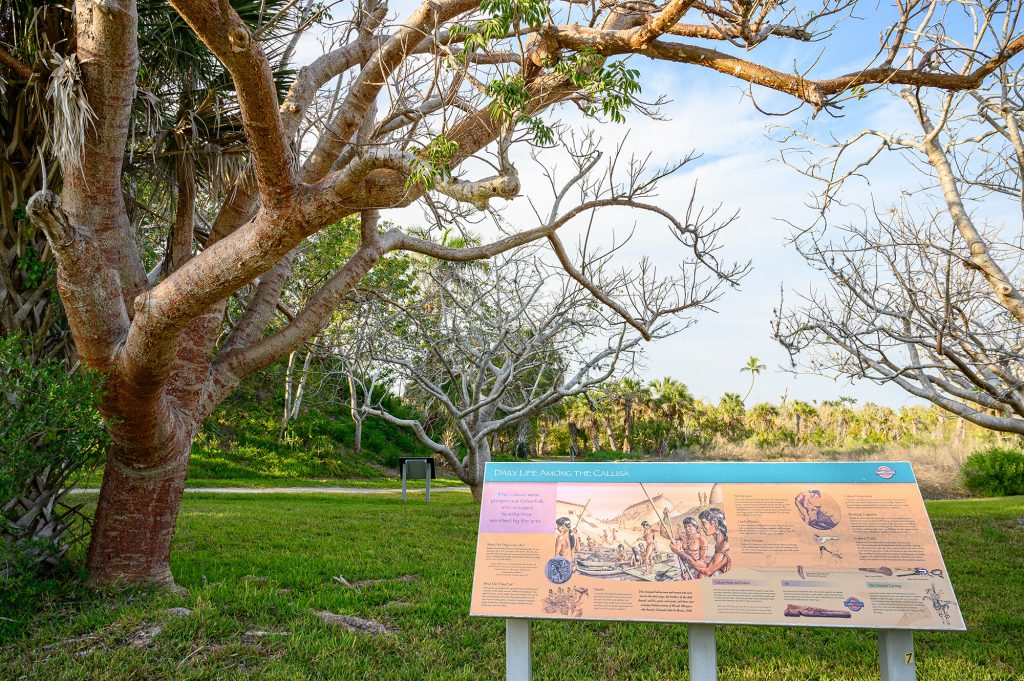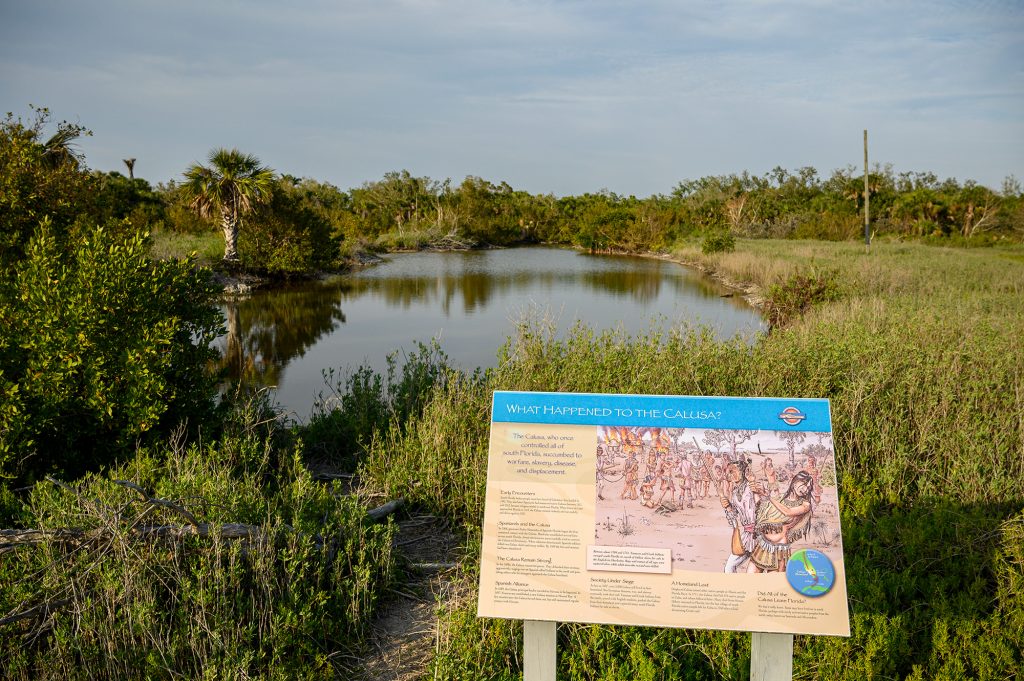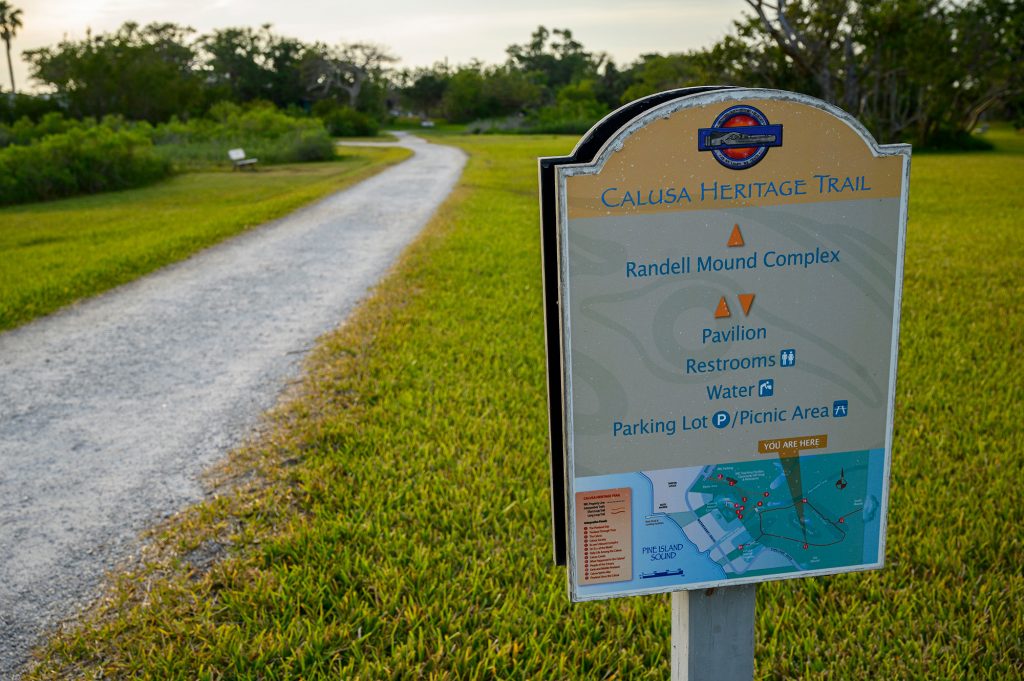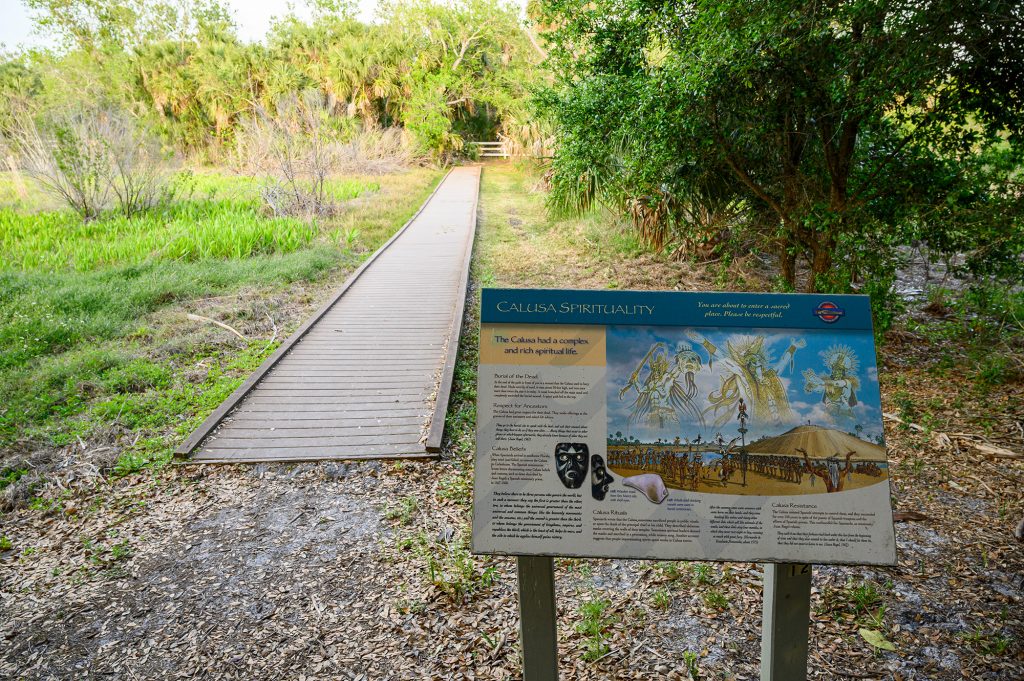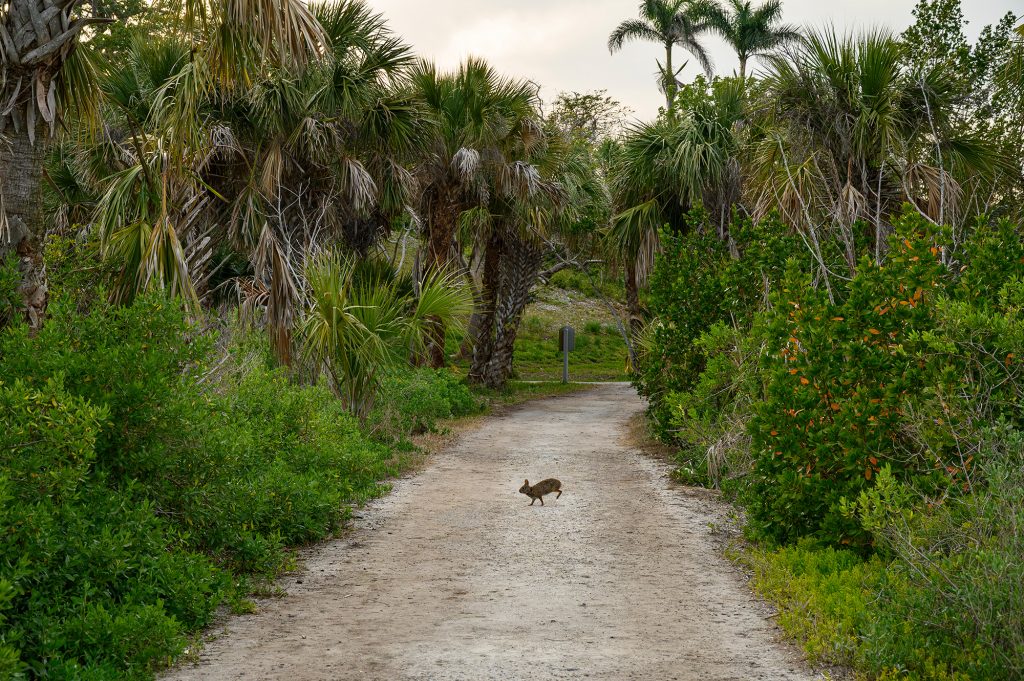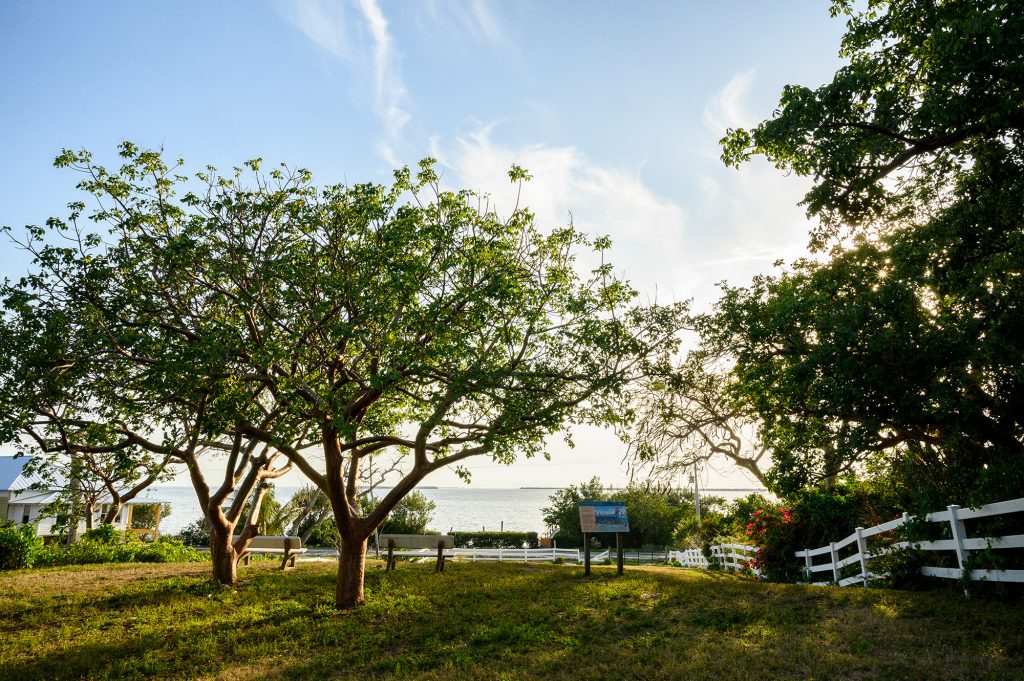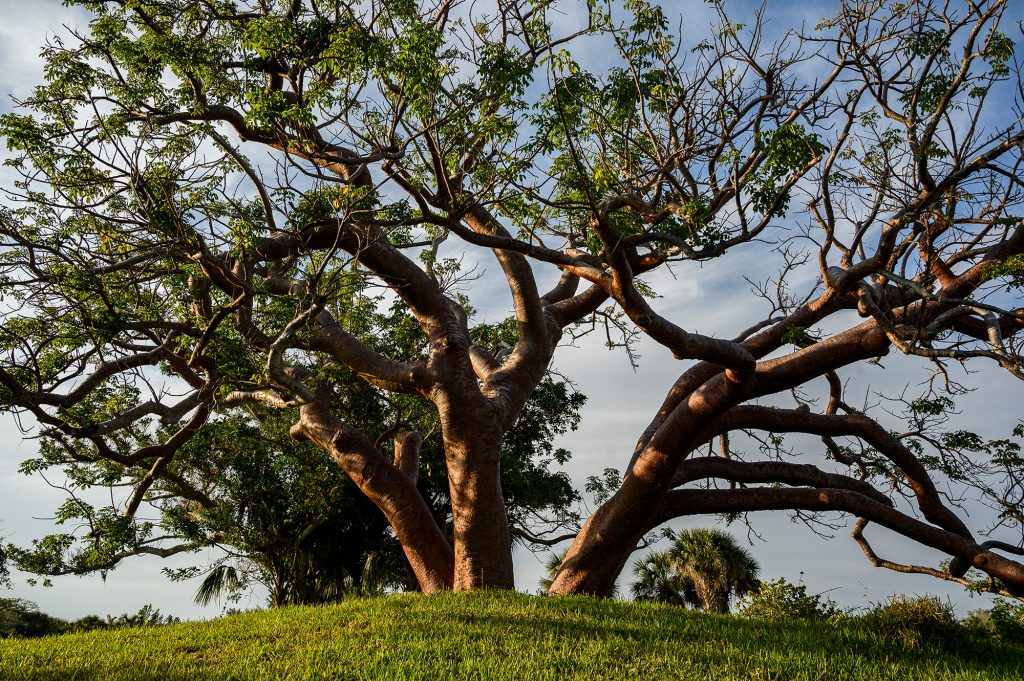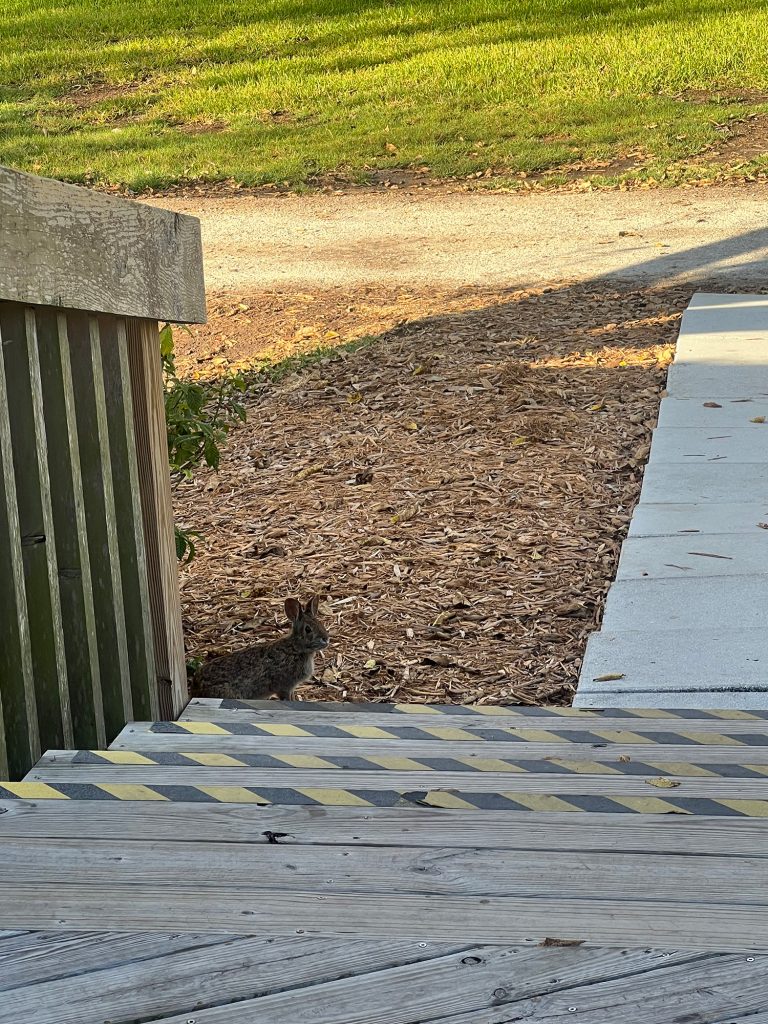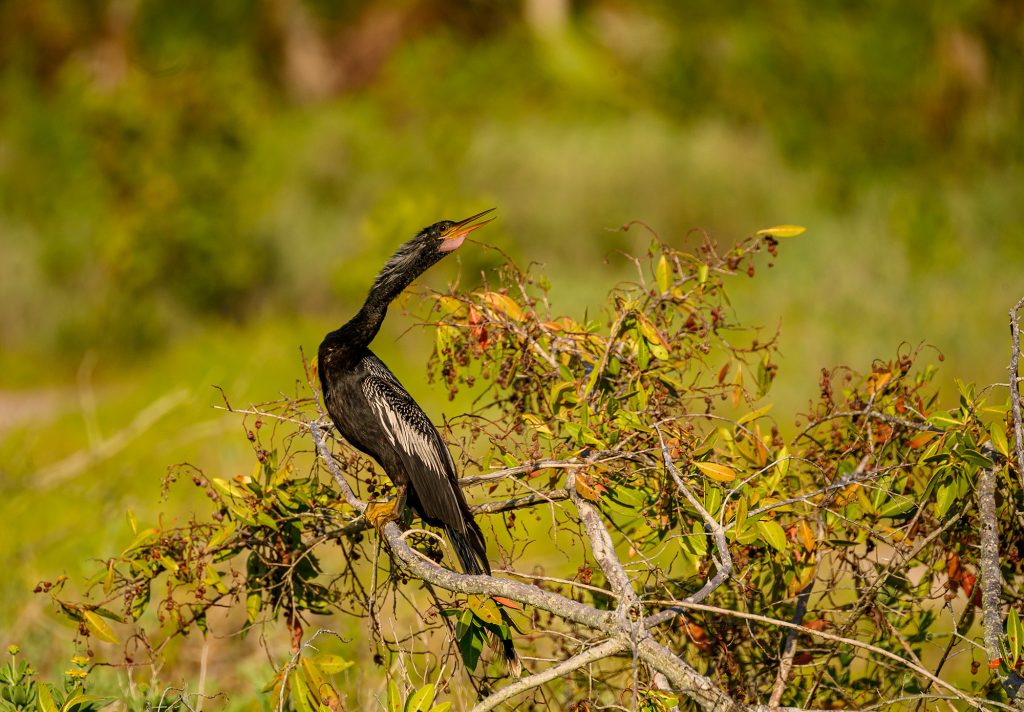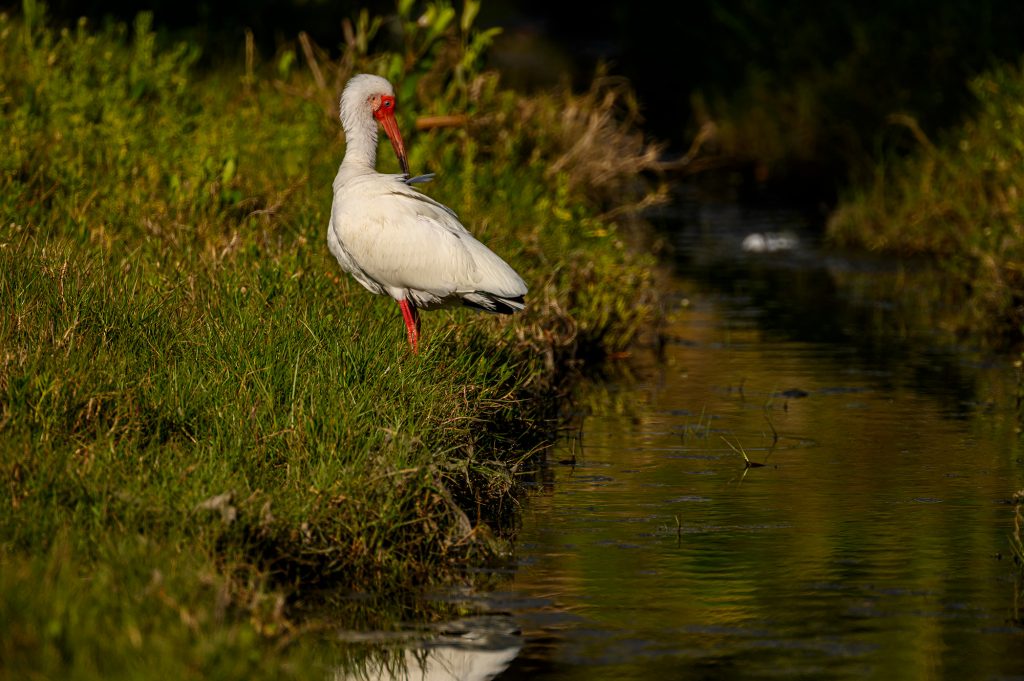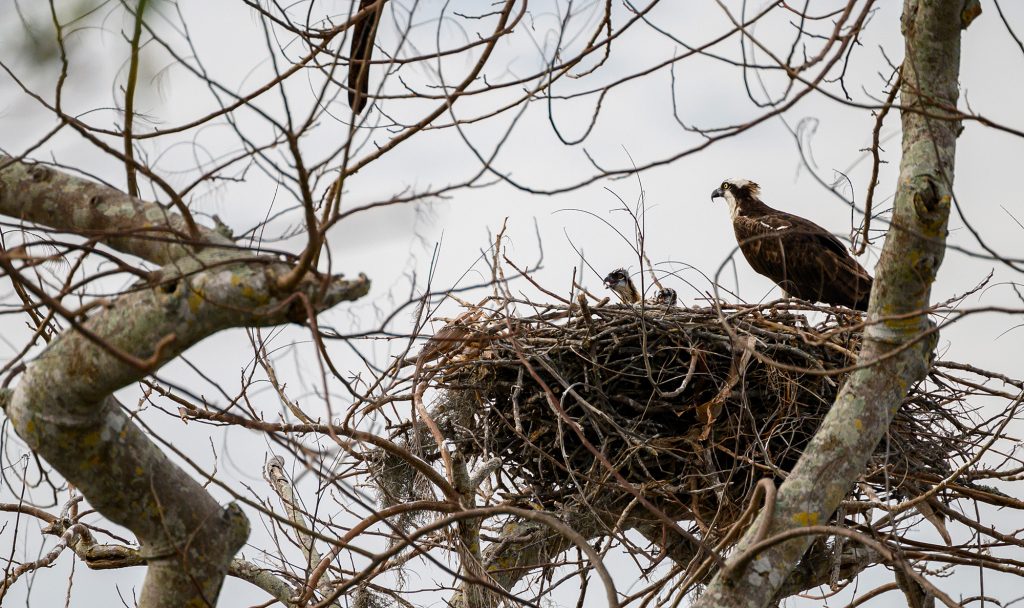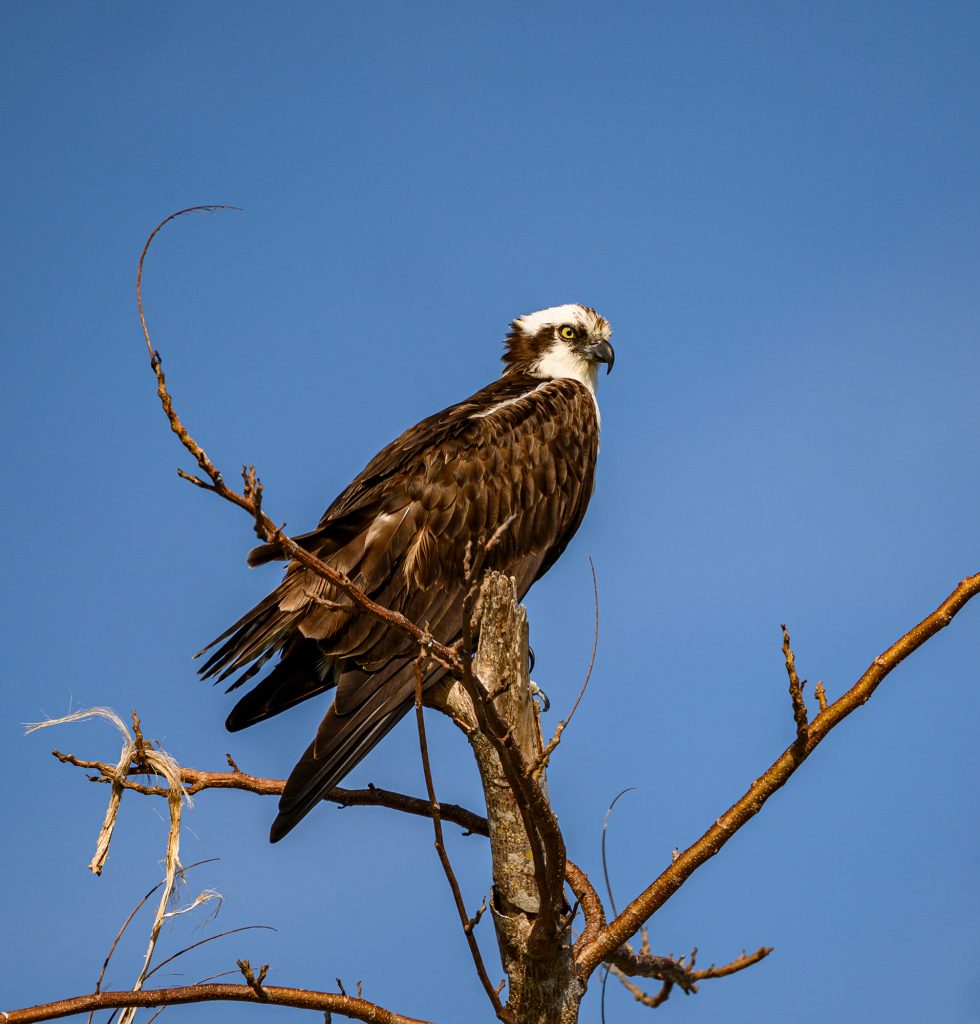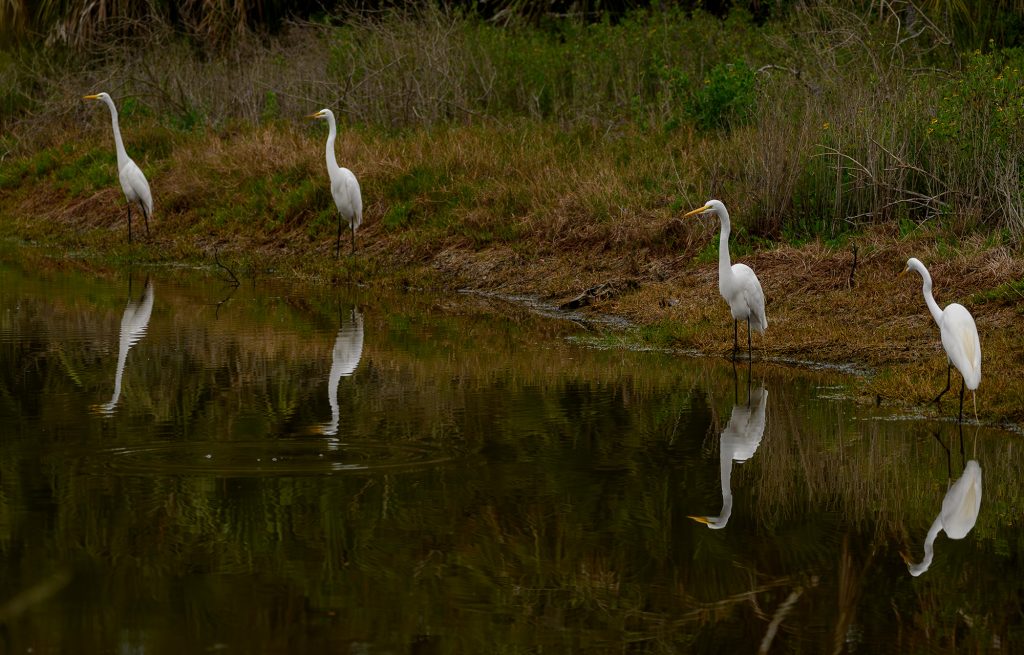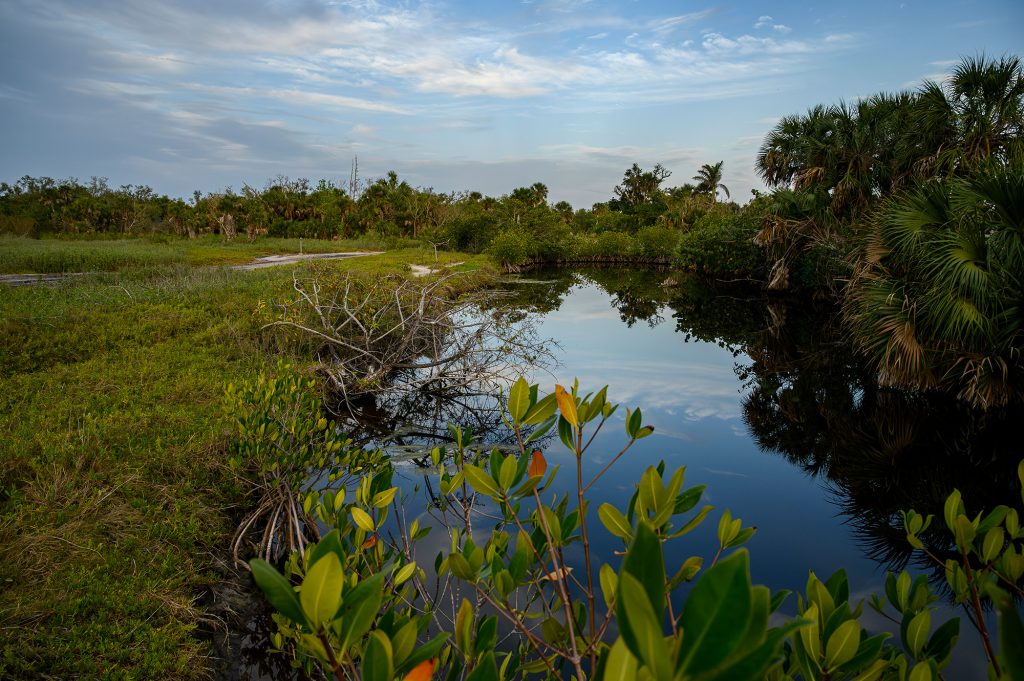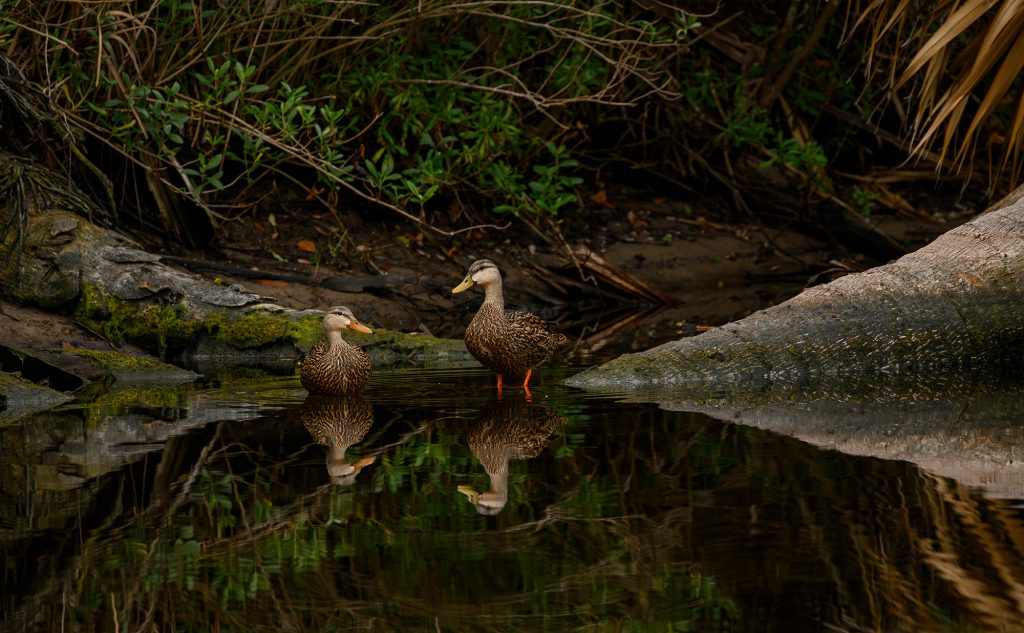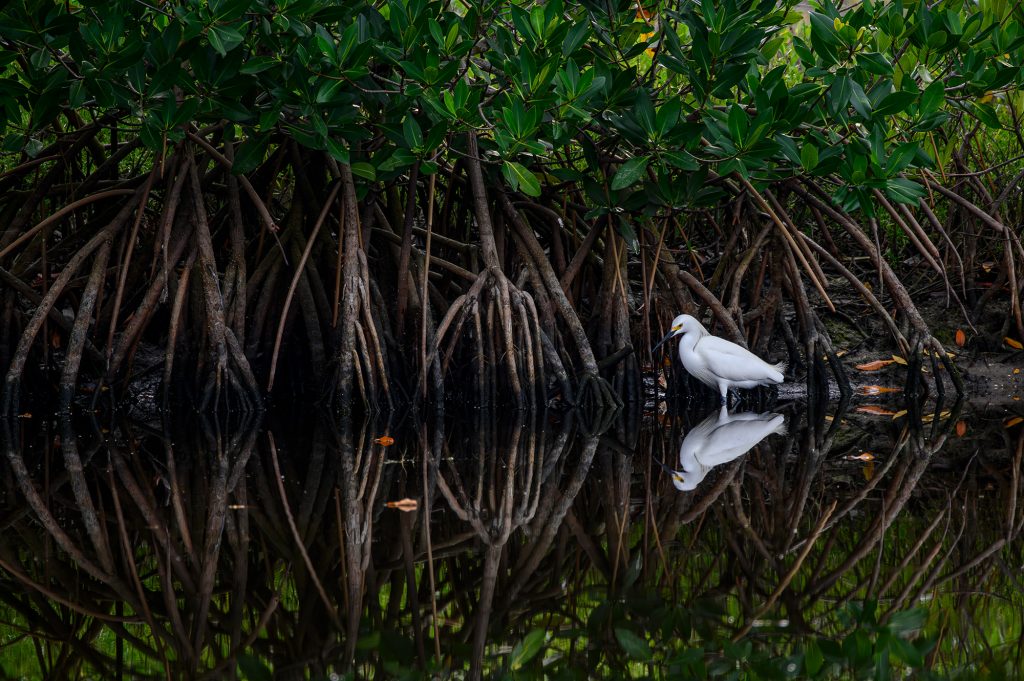For nearly 30 years, the Florida Museum’s Randell Research Center (RRC) has worked to research, teach, and conserve the Calusa archaeological heritage, island history, and ecology of Pineland. Here, we provide a short introduction to the Calusa and the RRC for those who may be curious about or discovering each for the first time!
The Calusa
The Calusa were the Indigenous peoples who thrived along the estuarine and marine coasts of southwest Florida for almost 2,000 years. They were master fishers and engineers, building large shell mounds and middens from discarded shells and fish bones along the shorelines of Charlotte Harbor, Pine Island Sound, and Estero Bay. The Calusa also engineered extensive canals into the mainland and, in some cases, cut canals across entire islands for canoe travel.
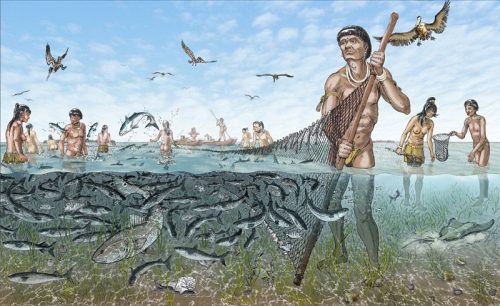
They constructed watercourts to hold and harvest fish, created intricate nets for fishing in shallow water, and carved dugout canoes from huge cypress trees. The Calusa were known to trade with other Indigenous peoples in Florida and into the greater southeastern United States. Their society was hierarchical (or ranked) and deeply tied to religion and ritual. Today, the Calusa are renowned for having been one of the most socially and politically complex Indigenous societies in North American that was based on fishing rather than agriculture.
Though the Spanish arrived in Florida in the early 1500s, the Calusa largely managed to avoid conversion and evade capture for another 200 years. Their perseverance was aided by the Calusa’s strategic use and command of shallow estuarine waterways, impressive military, and extensive social networks inland. However, in the 1700s, disease – along with warfare with the Spanish and other Indigenous groups (now involving firearms) – decimated the Calusa kingdom. Many Calusa people perished or were captured and sold into slavery. Those who resisted joined other Indigenous peoples in Florida or fled to Cuba. While the last known historical record of the Calusa is from 1763, their legacy continues through Florida’s federally recognized Tribes today.
The Randell Research Center
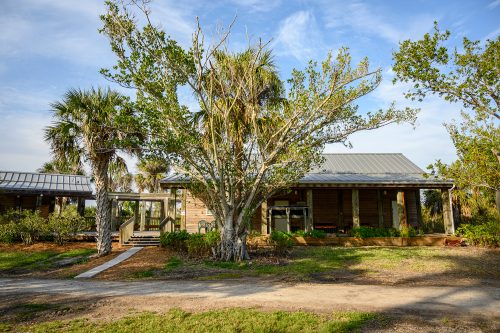
Established in 1996, the Randell Research Center is a part of the Florida Museum of Natural History and is located in Lee County on Pine Island — Florida’s largest island! The center is based at the Pineland Archaeological Complex, also called Pineland. Once home to one of the largest Calusa communities in southwest Florida and representing over 1,500 years of Indigenous history and ways of life, the center works to preserve the archaeological, historical, and ecological significance of Pineland; communicate the local, national, and international importance of the site; and inspire heritage stewardship through their educational outreach programs. To tell the story of the origins and the first 25 years of the center, including how it came to be a part of the Florida Museum and its legacy of archaeological research, RRC founder and Florida Museum of Natural History Curator Emeritus William (Bill) Marquardt wrote a three-part Brief History of RRC series!
The center is also the home of the Calusa Heritage Trail! Winding around shell mounds and vistas, the Calusa Heritage Trail is a nearly mile-long walking (or running!) path for visitors to the RRC. At almost one mile long, the trail is open daily for self-guided tours and takes visitors through stunning coastal habitats and culturally significant areas of the Pineland Archaeological Complex. Leashed dogs are welcome, free parking is available, and there are restrooms and a gift shop open on a regular schedule.
Several locations around the trail have interpretive signs that talk about the rich history of the Calusa. Visitors can summit large shell mounds built by the Calusa, walk along the remnant edges of the Grand Canal that once crossed Pine Island, and look out across Pine Island Sound to neighboring barrier islands which were also once home to the Calusa. The trail is part of the RRC’s effort to preserve the Calusa’s legacy by sharing archaeological and environmental research at the site.
The trail is also an exceptional biodiversity preserve, traversing a variety of coastal, marsh, and forested habitats. For example, Pineland is home to over 100 species of plants and birds, including large iconic gumbo limbo trees and nesting ospreys. While marsh rabbits are the most common mammal that visitors encounter at the RRC, Pineland also hosts others such as bats, coyotes, and racoons. Reptile sightings include gopher tortoises and eastern indigo snakes, among several other species of lizards, turtles, and snakes.
Both dry and wetland habitats across the trail support year-round and seasonal flora and fauna, always providing something new to see! Natura lovers and birders visit the RRC and Trail often to enjoy the changing of the seasons.
Welcome to the RRC and Pineland
Whether you are a long-time fan of the RRC and Pineland, or new to this amazing piece of Florida’s rich history and Pine Island, we look forward to seeing you soon on the trail!
If you are interested in joining the Friends of the Randell Research Center or learning more about this group of dedicated supporters.
About the author
Patricia Escobar-Torres is an Environmental Communicator for UF Thompson Earth Systems Institute and an Environmental Science Major at the University of Florida. More about Patricia
